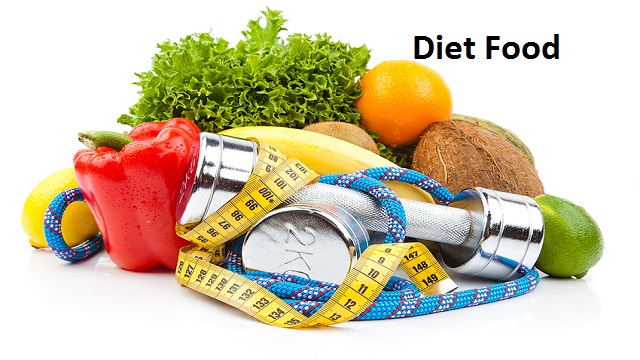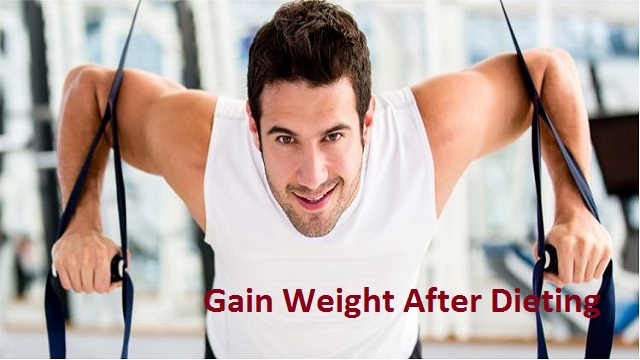
Everything You Should Know About Reversing Diet.
Dieting is something you’re probably already familiar with, but what about reverse dieting? The diet to follow when your body stops responding to your efforts and you’ve reached a weight loss plateau after drastically reducing your calorie intake.
Believe us when we say that being there is frustrating; we can attest to this from personal experience. In order to help you successfully reverse diet your way back to a healthy, happy body, we will teach you about reverse dieting.
What Is A Reverse Diet?
Prior to relatively recently, the bodybuilding industry actually invented the term “reverse dieting” to aid competitors after a competition. You cannot simply resume eating normally as soon as you leave the stage because you must drastically reduce your calorie intake in order to prepare your body for stage performance. With small increases in calories, you must gradually retrain the body to process food, calories, and function.
Reverse dieting has gained popularity among everyday weight loss enthusiasts more recently as a result of popular fad diets that severely restrict calories, causing the metabolism to slow down or stop functioning and causing the dreaded weight loss plateau.
A reverse diet is exactly what it sounds like: instead of cutting calories as is the case with a traditional diet, it reverses the calories in an upward direction. Improve your metabolic health while losing weight, and all of this is possible by gradually increasing your calorie intake.

How Does Reverse Dieting Work?
Utilizing calories from food in an efficient manner to improve body composition and general health is the goal of reverse dieting. It works by restoring the body’s metabolic function. Sadly, it is not as straightforward as calories in, calories out (CICO). According to this energy balance theory, weight gain results from consuming more calories than you expend. Conversely, you lose weight when you consume fewer calories than you expend.
However, a variety of factors, such as genetics, appetite, activity, stress, sleep, and others, have an impact on how our bodies utilize the calories and energy that come from food, making weight loss and body optimization more difficult. Your metabolism becomes important in this situation. We must first understand how the metabolism works in order to fully appreciate the advantages of reverse dieting.
What Is Metabolic Adaptation?
To use those calories effectively, our metabolism changes depending on how much food we consume (or don’t consume, as in the case of dieting). Unfortunately, maintaining organ function is more important than reducing body fat for aesthetic reasons, so when we restrict calories as a result of a fad diet, our metabolism may actually slow down, preventing weight loss or even causing us to gain weight in the form of body fat.
When it comes to keeping us alive and utilizing our food intake to support bodily function, our metabolisms are incredibly functional and highly adaptive. Every ounce of energy we possess comes from metabolic processes that keep our organs functioning properly, help us build muscle, and support daily activity. The process of adaptive thermogenesis, or metabolic adaptation in layman’s terms, is what makes reverse dieting effective.
What Takes Place When Weight Loss Slowed Or Stopped?
Repressed Hormone Activity. The hunger hormones (leptin, ghrelin, insulin, and peptide YY) may not work properly, making you feel constantly hungry and unsatiated. You may also end up eating more frequently, which can lead to weight gain.
Decreased exercise activity thermogenesis (EAT).This overrides the calorie-burning process you experience when you exercise and causes significant declines in performance in both indoor and outdoor activities.
Digestion Has Slowed.As a result of the body not receiving a lot of food, digestion can slow down, giving the body the best chance to extract all the nutrients and calories from your food in order to support overall health and function.
Thermic effect of food (TEF) reduction.Digestion through the GI tract and the process of breaking down your food will burn fewer calories for you.
RMR (resting metabolic rate) reduction.When you don’t give your body enough food, your metabolism will prioritize providing energy to your vital organs over other tasks like reducing inflammation, preserving the health of your muscles, and supporting the growth of your hair and nails.
The good news is that by using reverse dieting and gradually increasing the number of calories your body must use for bodily functions, you can lull the body back to running metabolic processes effectively and healthily. This will help you lose weight over time by reversing all the effects of a slowed metabolism mentioned above as well as boosting your general energy and vibrancy.

Why Do People Gain Weight After Dieting?
Within six months of stopping a diet, the majority of diets fail and the majority of dieters gain the weight they lost back. Generally speaking, most people who severely restrict their calorie intake on a fad diet like keto or Atkins will revert to their previous eating habits, drastically increasing their calorie intake and putting on weight.
Overeating, indulging in foods that were forbidden by your diet (bread, fruit, candy, dairy, etc.), celebrating weight loss with food, and engaging in other unhealthy eating behaviors are all examples of this. ) may also unfavorably influence weight gain. The fact that diets don’t teach you how to build a lifestyle around your weight loss and new weight management—a major flaw in dieting and an area where reverse dieting can really excel—is another reason why this occurs.
Who Should Reverse Diet?
Coming out of this caloric deficit can be a great opportunity to work on reverse dieting if you’ve ever experienced yo-yo dieting, severely restricting calories for a long time, or a significant weight loss plateau. You’ll be able to gradually up your calorie intake, eat more, enhance metabolic function, and feel better all around if you do this.
It is important to understand that the goal of reverse dieting is not to lose weight quickly, but rather to get your body back to a point where you can start a weight loss journey or do a cut without having to limit your body to such low numbers. If your activity level has been higher than your calorie intake and you’ve reached a functional plateau in terms of performance, strength gains, and overall health, a reverse diet may be the solution for you.
When you reverse diet, you can anticipate increases in your basal metabolic rate (BMR) and calorie expenditure, as well as improvements in your digestion, hormone function, and skin, hair, and nail health. Additionally, you can expect to see a significant increase in your workout capacity because you’ll have more energy available, better nutrient absorption, better bowel movements, an improvement in your digestion, and a decrease in bloating. We think it’s cool, you agree?
How To Reverse Diet?
So, after making it this far, you’ve decided that traditional diets are no longer suitable for you because you’ve been in a calorie deficit for too long. Let’s assume that you understand that reverse dieting isn’t a magic cure-all and that the objective of the process is to restore the body to its optimal functioning rather than to shed pounds, so that the next time you want to lose weight, you can do so successfully and without putting yourself under undue stress.
Now that we are in a good position, let’s explore what the reverse dieting landscape might look like for you and how to reverse diet .
Reverse Diet Plan:
- Maintain a food diary.To understand how to gradually increase your calorie intake over time, you must be aware of your current caloric intake. Counting macronutrients, logging in a program like My Fitness Pal, or using hand portions are all methods of tracking your diet. The most effective way to reverse diet is to hire a nutrition coach who will calculate your numbers and guide you through the process.
- Calculate the calories.You must be aware of your caloric intake in order to comprehend how to gradually increase your caloric intake over time. Use hand portions, a food tracking app like My Fitness Pal, or count your macros to keep track of what you eat. The most effective way to reverse diet is to hire a nutrition coach who will calculate your numbers and guide you through the process.
- Choose your Macros.You can get a general idea of how many calories you need each day to maintain your weight after calculating your caloric needs. Now that you know how many calories are made up of protein, carbohydrates, and fats, you should calculate your macronutrient intake.
- Define your objective.Being patient is advised because reverse dieting takes time. If you want to use that as motivation to take it slow and respect the process, by all means, go ahead.To successfully reverse diet, we advise aiming for a time frame of two to three months. Again, having a coach can be very beneficial during this process, and we highly recommend thinking about working with a nutritionist.
- Calorie intake.Calories should now be gradually added. Once a week or every seven days, we advise increasing the number of calories you consume from carbohydrates and fat (your protein macro should range from 0 to 1 g per lb of body weight). For instance, we advise a weekly increase of 100–300 calories, or 4-5 percent, in calories.
- Track Your Development.Make sure to record your food, macros, and calories in a journal or an app. Be exact, diligent, and committed to the process. Track your advancement as you go. Measure your progress, take pictures, and keep an eye on how your body is responding. Reduce the 7-day calorie bumps if you are gaining weight too quickly.
- You probably have it right on target and just need to maintain consistency if you’re losing weight, responding favorably, reducing bloating, and having more energy. Finding your rhythm requires some trial and error, but keep in mind that a coach can make things much simpler by keeping you accountable and inspiring you along the way.
When To Stop Reverse Dieting?
As previously stated, a small amount of weight gain while on a reverse diet is normal and unavoidable as the body returns to a state where it has enough calories and energy to function normally. It’s acceptable if the weight changes. You could gain one week, lose the next, and so forth. It is also acceptable for the weight to fluctuate by 2–10 lbs.
It may be time to slow the calorie increase and maintain if, however, you reach a point where you’re gaining more weight than that without your weight stabilizing. You will eventually reach a point where you are eating more calories than your new maintenance intake, and at this point you should pause your calorie intake.
The alternative: reverse dieting.
By strategically and gradually increasing their portions, as Layne Norton first suggested, smart bodybuilders slowly revert to their pre-competition diet.
In essence, one nutritional step at a time, they reverse the steps they took to get competition-ready. Additionally, they frequently gradually cut back on cardio and prioritize strength training.
By doing this, they can gradually raise their metabolism. We will discuss metabolism in more detail later. ).
Eventually, they reach a calorie intake where they feel energised, are performing well in the gym, and are gaining some muscle—all while minimizing fat gain.
The use of PEDs, or performance-enhancing drugs, is also a factor, so this does not imply that there will be no fat gain.
Reverse dieting, however, can put them in a much better position to compete once more in the future than adhering to a “see-food” diet that sharply increases their body fat percentage.
They’re back to eating a normal and sustainable amount of food, so it’s also okay if they decide they’d rather never compete again.
In general, we advise against eating in a bodybuilder’s manner.
Bodybuilders adhere to extremely strict that for weeks prior to competitions, which gives them abs you could grate cheese on but has the unfavorable side effect of slowing their metabolisms. (We’ll explain why later. ).
This strategy would eventually lead to an extreme case of hunger if they tried to continue it after competitions.
When following a low-calorie, it’s nearly impossible to gain as much muscle as you would like to during the offseason, which is something that competitive bodybuilders frequently attempt to do.
However, bodybuilders add a lot of fat to go with their muscle when they eat as much as they want, just like everyone else does.
Read More: Deltoid Muscles
Leave a Reply